A full-stretch return, followed by a sliding backhand retrieval — it's a miracle the point is still alive. And now, out comes a Hail Mary lob that lands right on the line. It’s a crucial point in the match, and he’s about to do it again, right? After three shots showcasing otherworldly athleticism and intrinsic talent, the point is finally on his terms. All he needs to do now is end it.
The full court is open. One chance. Unlimited options. Don’t get cute. Drive it—heavy and fast.
Oh no, why are you changing the grip?
Stay with me here—you don’t need to take this risk.
What have you done?
The point ended three shots later. The match, twelve minutes after that. Oh well—something did happen again: The Alcanumdrum.
This is the complete Alcaraz experience. You don’t always know what just happened, but for better or worse, when the point ends, you’re left shocked by it. He only knows one way. And for all the times that’s cost him, it’s also made him what he is today: an anomaly.
You don’t become the greatest drop-shotter of all time at 20 years old by accident. An unpredictable force—often not even knowing what shot he’d hit next, so how could his opponents? Yes, it can be frustrating at times—recently, more often than not—but without that chaos, Carlos is just Carlos. He’s not Carlitos or Charlie—the version the world has come to admire.
Consider him a butterfly. It’s in his nature to fly high, to soar above the rest, flaunting his brilliant colors—his beauty. That’s what makes him unique, captivating, and unforgettable. And he knows it. He flies, flaunts, brags, and wins. But one thing he doesn’t know is that he’s exposed. Or maybe he does, and in the midst of it all, he simply doesn’t care.
And can you really blame him?
I can’t—and I don’t want to, if I’m honest. What I do want is for him to raise the margins just a bit. Tennis, to me, is a game of attack and defense. And for someone who might be the best defender in the game right now, he doesn’t need to rely entirely on attack, the way some champions in the past had to.
Comparisons are often the thief of joy—but I’m going to make one anyway. Take Federer, for example—the player people most often link to Alcaraz. In my opinion, Alcaraz doesn’t play like Federer; he thinks like him. There’s a big difference.
This isn’t a knock on either player—it’s simply a reflection of how different they are, despite having the same mindset and mold. One had a single-handed backhand, the other a double. One had a forehand that never gets rushed; the other’s can be, but when set, it reaches up to 4,500 RPM. One had inch-for-inch the best serve in the game. The other… well, let’s not get into that.
Alcaraz doesn’t start 80% of his service points with an advantage—and probably never will. But what he does start 100% of his points with is the ability to hit a winner from anywhere on the court and chase down one more ball better than almost anyone else. What will take him to the next level is learning how to balance those two.
This isn’t a disguised plea for him to become a pusher. He’s a shot maker at heart, and his success stems from that intrinsic mindset. What I hope is that he finds a middle ground—where his defensive gifts don’t go untapped simply because he refuses, as he once put it, to “finding the joy in suffering.”
Monte—Carlos
As has been the case for the past 52 weeks, Alcaraz entered another big tournament with serious questions hanging over him. And while he didn’t answer all of them—if any—he leaves with the trophy. Here’s my short review of what transpired.
What went right:
He didn’t mentally check out as he has in some previous tournaments, despite clearly never hitting his top level in a full match here. He was pushed hard in the first round against Cerundolo, was one point away from elimination against Fils, and dropped the first set in the final—but he never let go of the rope. That’s already an improvement.
His forehand was erratic throughout, but the added time clay offers seemed to bring some of its zip and pop back—something I felt was missing even at Indian Wells. Most importantly, his forehand drop shot was the one consistent weapon all week.
He won around 90% of the points where he attempted a drop shot—more than double his success rate during the Sunshine Double. It was back to its borderline-unfair, cheat-code level—and should be a key feature of his game in the next 3 months.
What he won despite:
I mean… really, everything?
The raw stats were mediocre at best. That’s a negative-31 differential off the backhand wing throughout the tournament, so all the questions about that shot remain. The serve was up and down, and as suspected, the kick serve looked a bit off here. But let’s see how it performs at Madrid’s altitude before making any firm conclusions.
Still, ask any player on tour: would they rather win ugly or lose pretty? Everyone chooses winning—for the confidence and habits it builds.
Road ahead:
My slight worry is that this week might make him complacent—believing this level is good enough. But early interviews in Barcelona suggest that won’t be the case. There also seems to be a shift in mindset, with him essentially acknowledging that the journey matters more than the result. If that holds, it could be a genuinely important step forward for him.
Spanish conditions and crowd support should help him. But more than just winning, I’ll be watching to see if he can put together a few matches of clean, flowing tennis. With the momentum from Monte Carlo, I’m confident he will win at least one of these next two tournaments.
Hopefully, the next time I write one of these, it’ll feel a bit more positive—regardless of the result. Him becoming a 7-time Masters winner or a 20-time ATP title holder would just be the cherry on top.
Ciao!

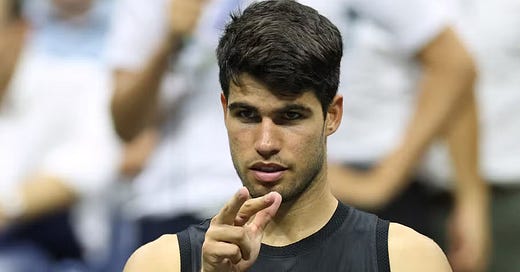


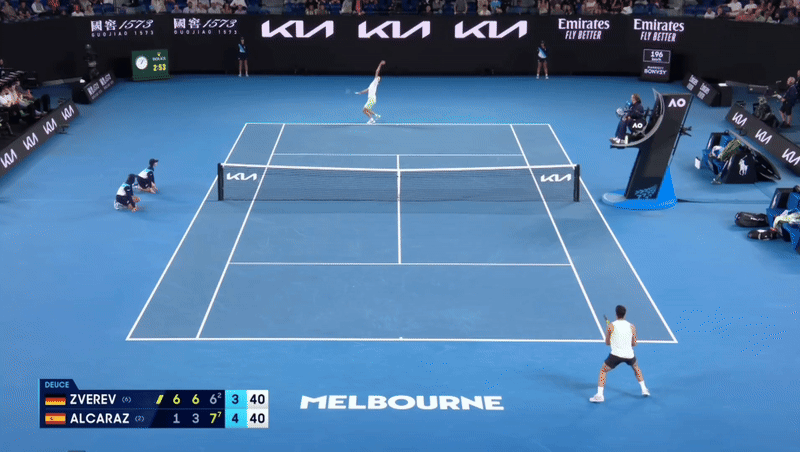
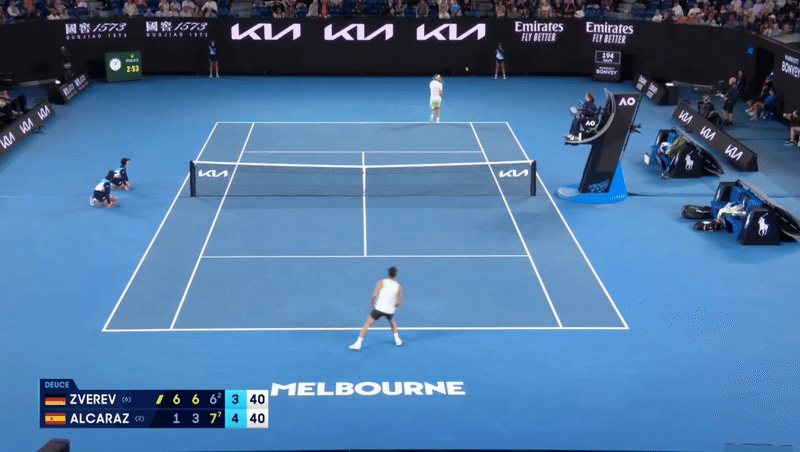

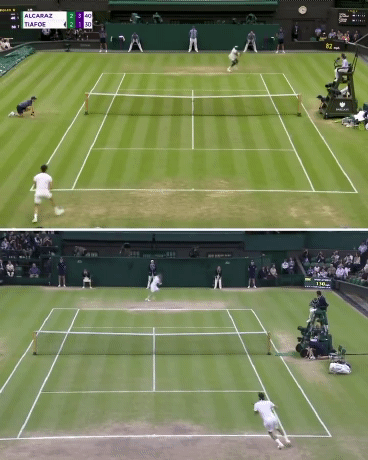
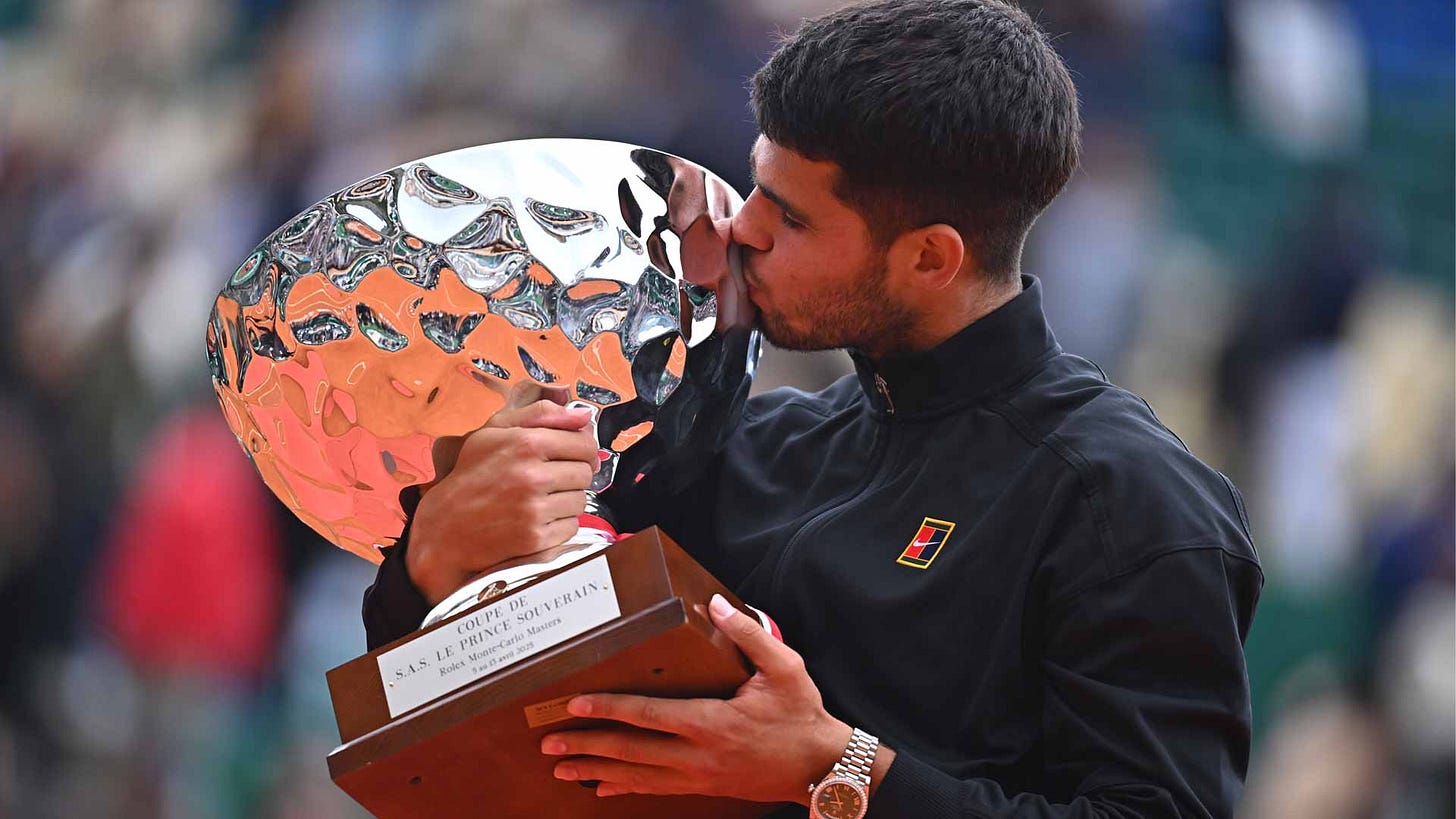
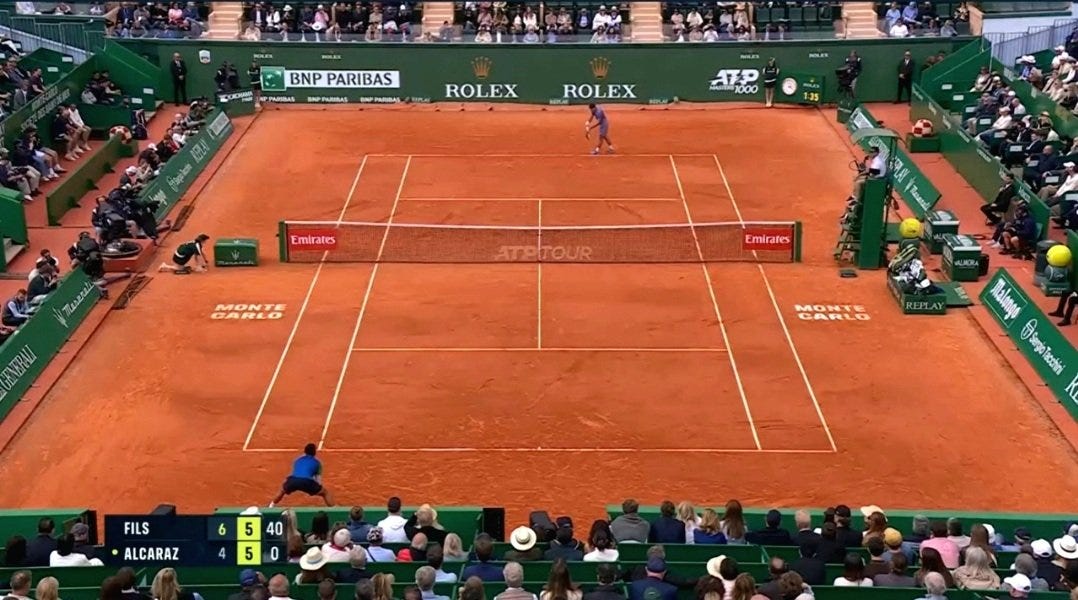

Ciao! Italian Sinner fan come in peace (I really like what I read from you on here so far, and I find some of your tweets actually funny.)
I do think from what Carlos' been saying in his latest interviews that right now he's in the process of learning how to cope with The Pressure. He's always been "the wonderkid" which comes with less pressure and less expectations, but now he's having to grow into "the experienced champion" figure. So he had to go from soaking up the noise around him in order to get energy from the positive attention, to having to shut off the noise around him in order not to get distracted or derailed.
I also think that because of this and also because of his competitive drive, Sinner's return to the tour might actually boost Carlos' attitude and help him focus on a target (might be my Sinner bias talking here though lol.)
Obviously the technical adjustments and possible issues (serve, backhand) are still there, but the surface change to clay should help with those two and make him a little bit more comfortable.